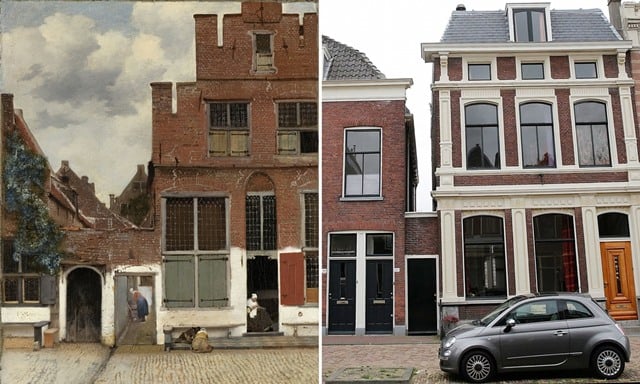
If you’re ever in front of 40 and 42 Vlamingstraat in the Dutch city of Delft, you’ll be standing on the very spot depicted in Johannes Vermeer’s painting The Little Street (ca. 1658). Frans Grijzenhout, an Amsterdam University art history professor, has made a key discovery about one of the just 35 known paintings by the Dutch master, who painted only two outdoor scenes—this one and his View of Delft (1660–61).
Amsterdam’s Rijksmuseum has mounted the exhibition “Vermeer’s The Little Street Discovered” to highlight the new finding.
The key document in Grijzenhout’s research was De legger van het diepen der wateren binnen de stad Delft, or the ledger of the dredging of the canals in the town of Delft, which surveyed the houses in the city and was accurate to about six inches. The ledger was used to assess taxes on city landowners to help dredge the canals.
The document revealed that two houses, each about 20 feet wide, flanked two passageways, each about four feet wide, corresponding to the structures and passageways Vermeer depicted. According to the museum, no other site in the city matched these specific dimensions. The houses that once stood there have been replaced by structures erected in the 19th century, but the gateway of the right-hand passageway is recognizable.
Vermeer’s widowed aunt, Ariaentgen Claes van der Minne, owned the house on the right; she was a tripe dealer, and her profession lent the passageway its name, the Penspoort, or Tripe Gate. Vermeer’s mother and sister lived across the canal, making the site a significant one for the artist.
“Vermeer’s The Little Street Discovered” is on view at the Rijksmuseum, Amsterdam, through March 13, 2016. It will then travel to the Museum Prinsenhof, Delft, where it will be on view March 25–July 17, 2016.